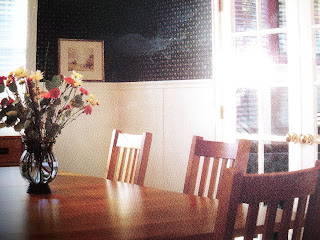
Several days ago, I watched a program entitled "Toxic Childhood" on CNN with Dr. Sanjay Gupta. It actually aired in the beginning of June, but through the magic of DVR I watched at my convenience. I'm glad I took the time to watch it because it really opened my eyes to all of the hazards that face our families; hazards that we don't normally think of or may not even know how to pronounce. Chemicals such as BPA, phthalates, PFOA, formaldehyde and PBDE are found almost everywhere yet they're linked to health concerns such as cancer, sexual problems, behavioral issues and weakened immune systems.
I haven't turned into a closet scientist or even a tree hugger, but I don't believe ignorance is bliss either. Although we can't possibly protect ourselves from everything out there, especially the things that are out of our control, we can still do the research necessary to be well-informed. Only then can we make the best decisions possible for ourselves and our families.
What are some facts I should know?
*Newborns have been exposed to over 200 chemicals in the womb.
*Only 200 out of 80, 000 known chemicals have been tested for safety.
*The standard for testing is based upon a 150 pound male so the findings are even worse for babies and young children.
*BPA is found in water bottles, baby bottles and even dental sealants. It's linked to reproductive problems, obesity, diabetes and cancer.
*Phthalates are found in personal care products, perfume, air fresheners, shower curtains and food packaging. They are linked to ADHD, male reproductive development and endocrine disruption.
*PFOAs are found in nonstick cookware, stain-repellent coatings, furniture and carpet. They're linked to cancer and developmental problems.
*Formaldehyde is found in personal care products, pressed wood products, glue and cigarette smoke. It's linked to nausea, skin irritations and respiratory and gastrointestinal cancers.
*PBDEs are found in televisions, computers, wire insulation and furniture foam. They are linked to liver and kidney damage as well as affecting the brain and behavior.
So, I'm informed....now what do I do? There are many things we can personally do to protect ourselves. Some are easy and affordable while others require a bit more effort and can be an added expense. The following are some ideas, but ultimately you need to decide what's right for you and your family:
1) Take your shoes off at the door; pesticides, fertilizers and workplace chemicals can all be tracked unknowingly into your home. This is especially of concern if you have young children who spend a lot of time on the floor.
2) Instead of non-stick cookware choose to use stainless steel or cast iron.
3) Buy organic fruits and vegetables whenever possible. As an alternative, wash and peel before eating for a simpler solution. (See Dr. Gupta's lists of The Dirty Dozen and The Clean 15)
4) Use a carbon filter pitcher for your drinking water to remove lead, chlorine and bacteria.
5) Buy meat and dairy products that do not have antibiotics or growth hormones.
6) Use glass instead of plastic to store food. If you do use plastic, be sure the number 7 is not on the bottom. This would indicate BPA.
7) Add houseplants to your home. They help to remove up to 90% of the toxins from the air.
8) Regularly dust and open your windows for ventilation. Inside air is 2 to 5 times more polluted than outside air due to to the formaldehyde in our furniture, carpets and drapes.
So, like I mentioned, these are just some ideas for you to consider. Making some or all of these changes to our daily routines can have very positive benefits. Some may think the ideas are laughable or unnecessary while others will not hesitate to do all they can. Whatever you choose, you may want to ask yourself, "How safe is my home?"